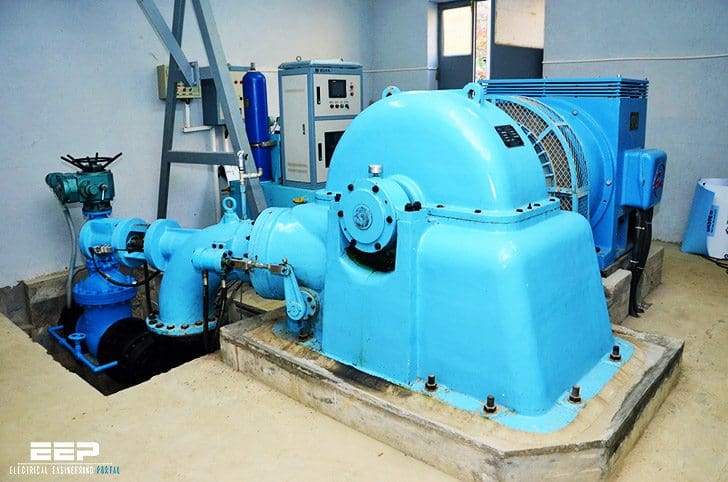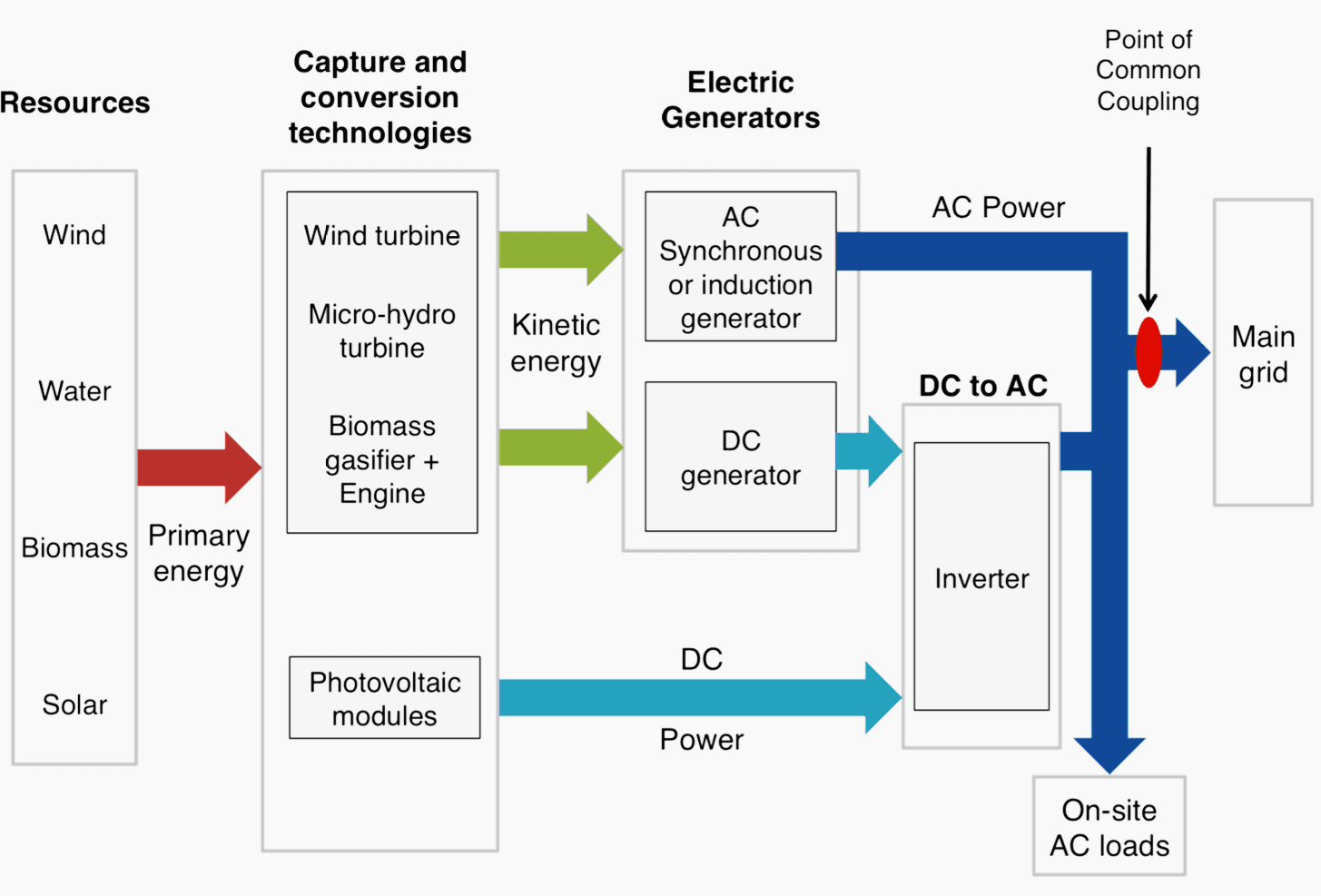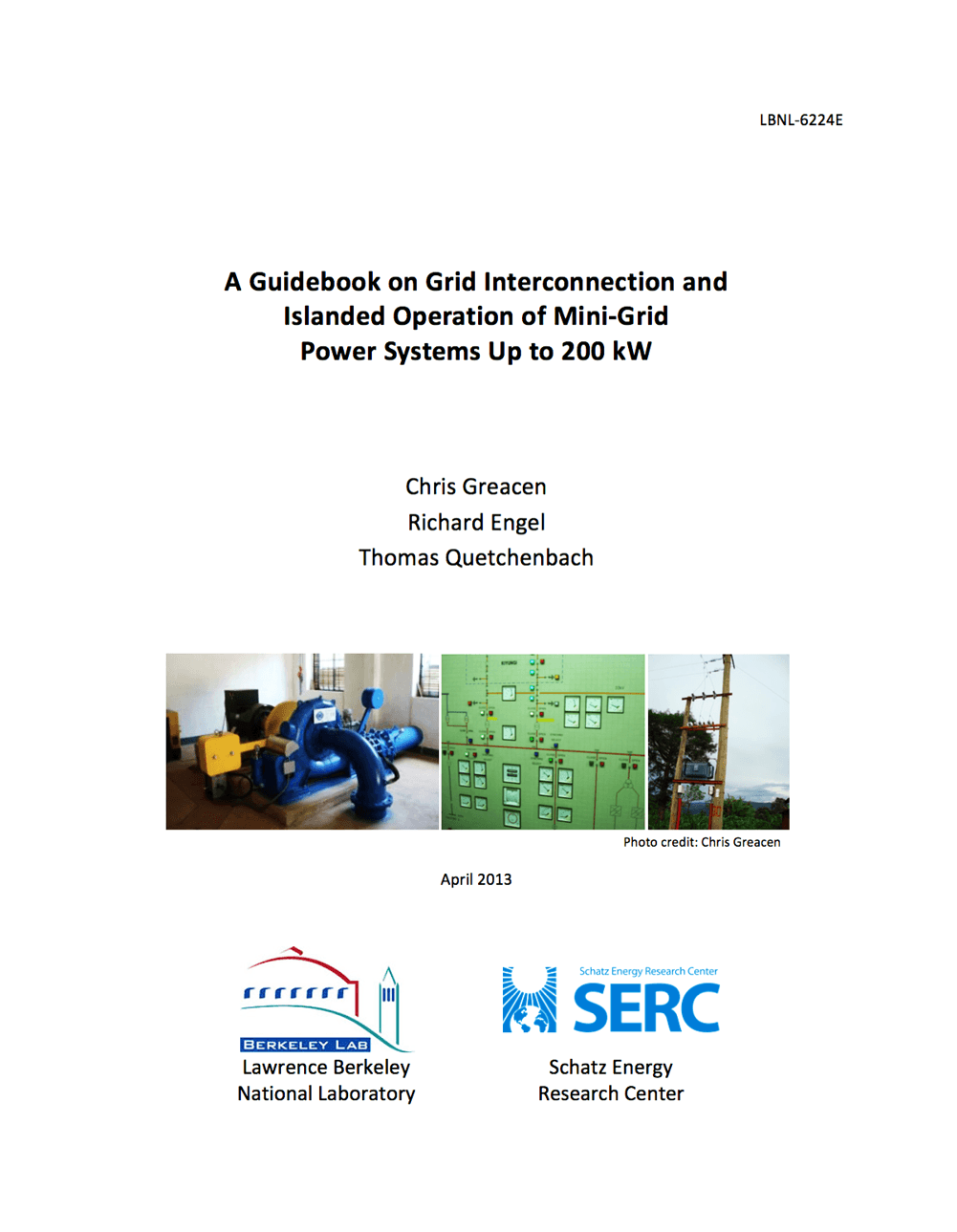When the ‘little grid’ meets the ‘big grid’
A Guidebook on Grid Interconnection and Islanded Operation of Mini-Grid Power Systems Up to 200 kW is intended to help meet the widespread need for guidance, standards, and procedures for interconnecting mini-grids with the central electric grid as rural electrification advances in developing countries, bringing these once separate power systems together.

The guidebook aims to help owners and operators of renewable energy mini-grids understand the technical options available, safety and reliability issues, and engineering and administrative costs of different choices for grid interconnection.
The guidebook is intentionally brief, but includes a number of appendices that point the reader to additional resources for in-depth information. Not included in the scope of the guidebook are policy concerns about “who pays for what,” how tariffs should be set, or other financial issues that are also paramount when “the little grid connects to the big grid.”
Mini-grids have long been used as an alternative to expansion of national electric grids to bring electrification to remote rural areas in developing countries. These mini-grids may use non-renewable (e.g., diesel generators) or renewable (e.g., solar photovoltaic systems or micro-hydropower) resources or a combination of both as their power source.
Traditionally, these mini-grids have operated in isolation from the main grid, but this is changing as main grids extend their reach into rural areas, offering the opportunity to interconnect existing mini-grids with national or regional energy infrastructure.

A grid-connected renewable energy mini-grid includes a locally available energy source (e.g. solar radiation), a device for converting this energy into AC electrical power (which may include a DC-AC inverter), loads, and a point of common coupling where the customer-owned equipment interfaces with the local electric utility’s distribution system. See Figure 1 for a schematic illustration.
After years or decades of operation, the utility grid expands into the area.
For customers, the main grid offers an electricity supply constrained neither by the mini-grid’s generation capacity nor by real-time renewable energy resource availability.
This, in turn, can enable expansion of the customer base in step with growing village populations and/or expanded use of electricity such as cooking, space and water heating, or rural industrial loads. For mini-grid operators, grid interconnection may provide an opportunity to increase revenue by selling surplus electricity to the utility.
To take advantage of these opportunities and to avoid losing customers to the utility, the mini-grid operator is often faced with 5 options:
- Interconnect the local electricity generator in parallel with the utility grid, becoming another power plant on the grid, with the utility assuming the responsibility for distributing electricity to customers (small power producer or SPP option);
- Continue to operate the local distribution mini-grid system, obtaining bulk electricity supply from the main distribution utility (small power distributor or SPD option);
- A combination of (1) and (2) above (SPP + SPD option);
- Maintain the local electricity generator for use solely as backup for the local mini-grid when the
utility grid goes down (SPD with backup option); or - Abandon the local electricity generator and mini-grid distribution system, with customers in the
area switching over to the utility grid (no SPP or SPD option).
| Title: | Calculation of earth potential rise in the underground power distribution cable network – Ashok Parsotam |
| Format: | |
| Size: | 2.9 MB |
| Pages: | 80 |
| Download: | Right here | Video Courses | Membership | Download Updates |



Hi Edvard, your web site is really good – thanks for all your effort.
There is a typo in this page,
https://electrical-engineering-portal.com/download-center/books-and-guides/electricity-generation-t-d/interconnecting-mini-grids
the caption in the download pane has the title: “Calculation of earth potential rise in the underground power distribution cable network – Ashok Parsotam”